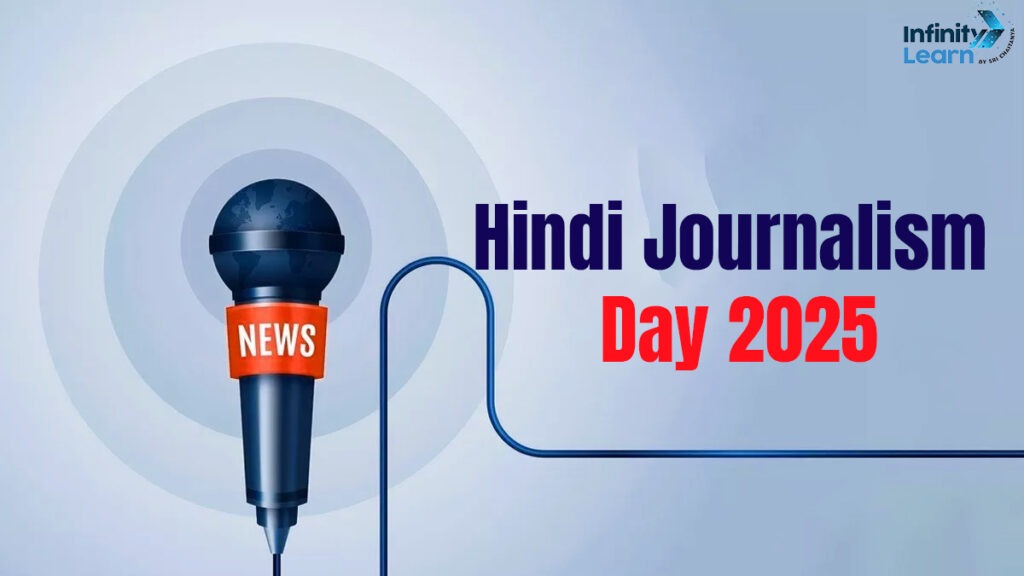Table of Contents
In an age of rapid digital communication, the roots of journalism in regional languages remain vital. Hindi Journalism Day, celebrated every year on May 30, serves as a powerful reminder of how journalism in India began not in English, but in the language spoken by the majority—Hindi.
This day commemorates the publication of Udant Martand in 1826, the first Hindi-language newspaper that gave voice to the masses under colonial rule. As we delve into its history and relevance today, we also explore how Hindi journalism has evolved, the challenges it faces, and why vernacular journalism remains essential for a diverse and democratic India.

What is Hindi Journalism Day?
Hindi Journalism Day is a national observance that honors the birth of Hindi journalism in India. It is a tribute to the linguistic and cultural pride of Hindi-speaking citizens and the pioneering spirit of early journalists who broke language barriers to make news accessible to the common people. This section introduces why this day holds immense importance for media practitioners and language advocates.
Why is Hindi Journalism Day Celebrated?
Hindi Journalism Day is celebrated to honor the publication of Udant Martand on May 30, 1826. This day is symbolic of India’s earliest efforts to democratize news and empower native language speakers. At a time when English was the dominant language in print media, Udant Martand represented a bold step toward inclusivity and linguistic pride.
When is Hindi Journalism Day Observed?
Every year on May 30, journalists, educators, students, and media institutions across India observe Hindi Journalism Day through lectures, exhibitions, panel discussions, and tributes to pioneering Hindi journalists.
The Historical Foundations of Hindi Journalism
Understanding the legacy of Hindi journalism starts with revisiting its humble beginnings. This section explains how Udant Martand came into existence, its founder’s mission, and the socio-political climate that shaped its emergence during British colonial rule.
Udant Martand – India’s First Hindi Newspaper
The first Hindi newspaper, Udant Martand (translated as The Rising Sun), was published in Calcutta (now Kolkata) and catered specifically to the Hindi-speaking population of north India. Despite limited readership and lack of financial support, it stood for truth, awareness, and linguistic identity.
- Founded by: Pt. Jugal Kishore Shukla, a lawyer and visionary from Kanpur
- First publication date: May 30, 1826
- Publication frequency: Weekly, with initial issues printed in Devanagari script
The Vision of Pt. Jugal Kishore Shukla
A lesser-known but highly influential freedom thinker, Pt. Jugal Kishore Shukla believed that language was a vehicle of liberation. He published Udant Martand with the aim of reaching the common man who was excluded from English-language journalism. Despite limited resources, his legacy lives on as the pioneer of Hindi media.
Why Hindi Journalism Day Matters Today
As India becomes increasingly digital and global, the importance of celebrating language-specific journalism grows even stronger. This section addresses the cultural, social, and civic relevance of Hindi Journalism Day in modern India.
Socio-Cultural Relevance
Language is more than a communication tool—it is an identity. Hindi Journalism Day reaffirms the value of regional language media in a country as linguistically diverse as India. It promotes:
- Media accessibility for rural and non-English speaking citizens
- Cultural preservation through native-language reporting
- Balanced representation in public discourse
Civic Importance in a Digital Era
With the internet as a primary information source, regional journalism in Hindi ensures that misinformation is tackled in the language people trust and understand. Hindi news platforms today engage over 400 million Hindi-speaking Indians, providing real-time updates and local news from towns and villages.
The Role of Hindi Journalism in the Freedom Movement
Hindi journalism wasn’t just about news—it was about revolution. This section highlights how newspapers in Hindi mobilized public sentiment, exposed colonial oppression, and became instruments of India’s independence movement.
Journalism as Resistance
During colonial rule, Hindi newspapers emerged as voices of resistance. They exposed the exploitative policies of the British government and fostered nationalist sentiment among the common people.
- Bharat Mitra, Kavi Vachan Sudha, and Prabha were instrumental in awakening political awareness
- Hindi publications often faced censorship, seizure, and imprisonment, yet continued their mission
National Leaders and Hindi Press
Freedom fighters like Mahatma Gandhi, Jawaharlal Nehru, and Bal Gangadhar Tilak frequently contributed to or endorsed Hindi journalism to connect with India’s masses.
The Evolution of Hindi Journalism: 1826 to 2025
Hindi journalism has undergone massive changes—from weekly newspapers in the 1800s to real-time reporting on mobile phones today. This section provides a timeline of transformations across mediums, formats, and technologies.
Print to Broadcast Media
Post-independence, Hindi journalism saw a massive transformation:
- 1950s–70s: Rise of Navbharat Times, Dainik Jagran, Amar Ujala, and Rajasthan Patrika
- 1980s–90s: Introduction of radio news in Hindi via All India Radio
- 2000s: Advent of Doordarshan’s Hindi news segments
Digital Hindi Journalism
With internet access expanding rapidly, digital Hindi news outlets now dominate:
- Leading portals: ABP News, Aaj Tak, Live Hindustan, Dainik Bhaskar, TV9 Bharatvarsh
- Hindi YouTube channels have millions of subscribers
- Mobile apps and WhatsApp bulletins serve tier-2 and tier-3 cities
This shift has made news consumption faster, personalized, and localized, especially in remote areas.
Prominent Figures in Hindi Journalism
Journalism is driven by people who dare to speak the truth. This section introduces some of the most influential Hindi journalists who shaped public discourse and upheld the values of truth, integrity, and justice.
Ganesh Shankar Vidyarthi
A fearless journalist and freedom fighter, Ganesh Shankar Vidyarthi edited Pratap and used journalism as a platform to challenge casteism, communalism, and British rule. He died while trying to stop communal riots in 1931, cementing his status as a martyr for journalistic integrity.
Other Influential Hindi Journalists
- Ramnath Goenka: Founder of The Indian Express, staunch supporter of press freedom
- Ravish Kumar: Recipient of the Ramon Magsaysay Award for ethical journalism in Hindi
- Vinod Dua, Sharad Joshi, and others: Voices that combined satire, critique, and mass appeal
Current Challenges Faced by Hindi Journalism
While Hindi journalism continues to grow, it is not without its flaws. This section explores the systemic and cultural hurdles that affect the quality, credibility, and sustainability of Hindi-language media in today’s landscape.
Threats to Editorial Independence
With increasing political influence and corporate control, editorial independence in Hindi journalism is under pressure. Many regional newsrooms lack the financial and technological resources to maintain autonomy.
Misinformation and Fact-Checking Gaps
The rise of social media has led to a surge in fake news in Hindi, often spreading faster due to lack of verification tools in regional languages.
- Need for AI-based Hindi fact-checking platforms
- Training programs in media literacy for rural audiences
How Hindi Journalism Day is Celebrated
Hindi Journalism Day is not just a remembrance but a celebration. This section discusses the ways people, institutions, and the media industry honor the spirit of Hindi journalism every year.
Educational Campaigns
- Journalism schools host exhibitions of old newspapers and conduct essay contests
- Guest lectures by award-winning journalists discuss the ethics of modern media
Public Awareness Drives
- Digital news portals publish retrospectives on Hindi media
- Trending hashtags like
#HindiJournalismDayand#UdantMartandraise awareness
These events ensure that the new generation of journalists understand their roots and uphold journalistic values.
Why Hindi Journalism Still Matters
Hindi journalism continues to hold a central role in shaping India’s democracy. This section explores its impact in rural empowerment, representation, and policy advocacy.
Representation for Bharat
In Indian policy and media discussions, the term “India” often represents metros. Hindi journalism represents “Bharat”—rural, diverse, multilingual India. It:
- Brings local issues to national attention
- Reflects rural realities in governance and elections
- Promotes democratic participation in native languages
Fueling India’s Democratic Backbone
A democracy thrives on informed citizens. Hindi journalism remains one of the most powerful tools for civic education, especially in UP, MP, Bihar, Chhattisgarh, Rajasthan, and Jharkhand, where Hindi is dominant.
FAQs on Hindi Journalism Day 2025
Why is Hindi Journalism Day celebrated?
To commemorate the launch of Udant Martand, the first Hindi newspaper in India.
Who started Hindi journalism in India?
Pt. Jugal Kishore Shukla in 1826.
What role did Hindi journalism play in India’s independence movement?
It informed and mobilized the masses through fearless reporting.
How has Hindi journalism evolved over the years?
From print to radio, TV, and now digital platforms.
What challenges does Hindi journalism face today?
Editorial pressure, fake news, lack of funding, and underrepresentation.








